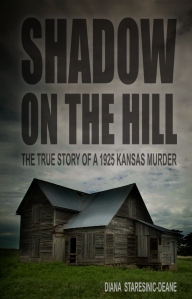Kansas true crime fans: it has finally happened. “Bender,” a movie about the Bloody Benders, is finally out.
Imagine if you were on a long and lonely trail in Eastern Kansas in the 1870s. You’re hungry, you’re tired, you’re alone, and maybe you haven’t seen another human being for days. And then you come upon a little inn along the trail and your weary self stops for some food and rest and company.
And while you’re waiting for your supper, your head is bashed in and no one ever hears from you again.
That’s the story of victims of the Bloody Benders, a family of serial killers that picked off one (usually male) guest after another, sacked their loot, then buried them in the inn’s Labette County, Kansas, garden.
And because it was the open prairie and fraught with danger, when a lone stranger went missing, his disappearance often went unnoticed.
Filmmakers John Alexander and J.C. Guest’s account of the story picks up at what turns out to be the beginning of the end for the Benders, when the disappearance of a father and daughter (murdered by the Benders) sent Dr. William York looking for them–a doctor whose family knew where he was and when he was expected to arrive. When Dr. York disappeared, a search was launched.
What happens to the Benders is never fully resolved.
When the vigilante search party arrived at the Bender Inn, what they found was an empty building and a garden full of bodies. The Benders, though, were long gone.
What the filmmakers do very well is capture the atmosphere of Kansas in 1873. Wide expanses of prairie grasses are both beautiful and anxiety-inducing. The horses plod along down the hint of a trail. Everything–and I mean everything–feels agonizingly far away. The characters never seemed more alone than when they came across a stranger on the trail.
“Bender” does take a few liberties with the story–Kate Bender’s brother was portrayed as a child instead of an adult–but it mostly stays true to the spirit of the Benders’ story. The historical film makes no excuses and offers no explanations. That, perhaps, is why the film is so haunting and still resonates with us today.
Any of us could find ourselves heading down the road, seeking shelter, only to knock on the wrong door.
More information:
Kansas film about notorious Bender family serial killers to make its debut Tuesday (Topeka Capital-Journal)
The Bloody Benders of Labette County (Legends of America)
Images of artifacts related to the Bloody Benders (Kansas Historical Society)

 Despite spending the better part of the past decade with my ear to the ground, listening for stories about Kansas’ most interesting crimes and criminals, Ben and Stella Dickson–two bank robbers who would eventually make the FBI’s Public Enemies list–never blipped on my radar.
Despite spending the better part of the past decade with my ear to the ground, listening for stories about Kansas’ most interesting crimes and criminals, Ben and Stella Dickson–two bank robbers who would eventually make the FBI’s Public Enemies list–never blipped on my radar.
